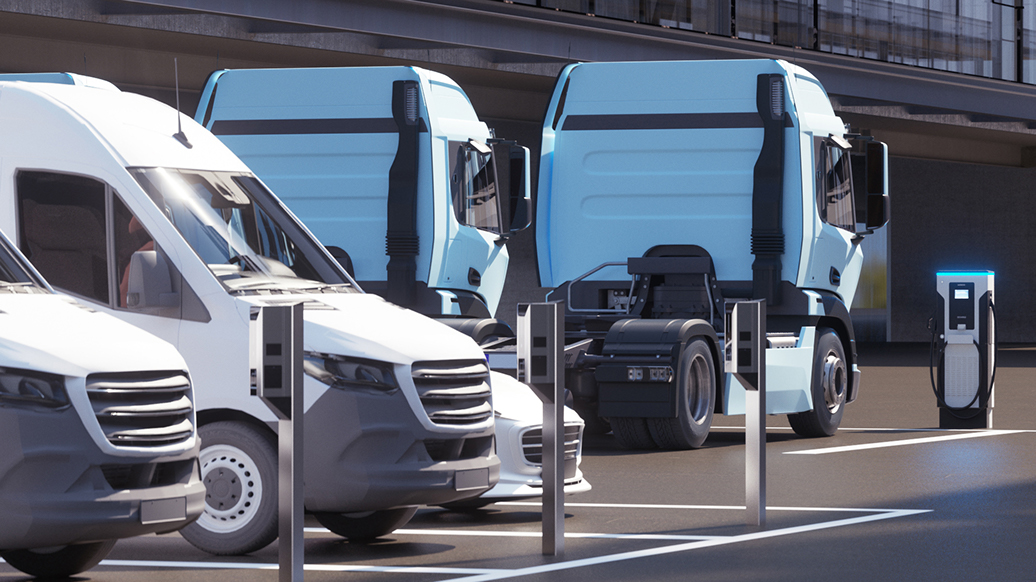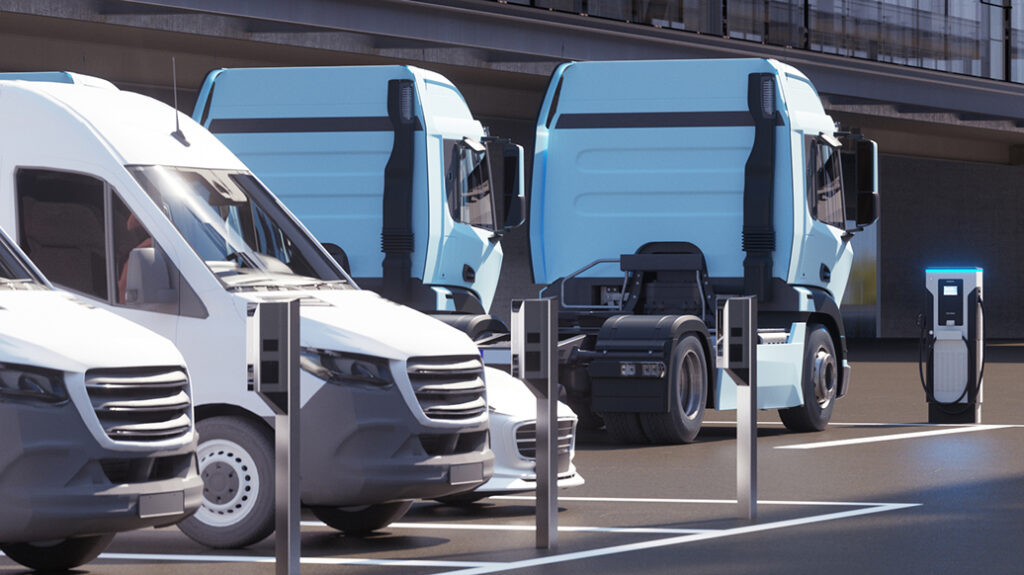Powering the eMobility depots of the future, today

The Werner von Siemens Award acknowledges employee achievements that have a positive impact on Siemens’ business, company culture and society. This award recognizes landmark projects that empower our customers to shape a more sustainable world, make a positive difference for societies and capture the spirit of what it means to transform the everyday.

We talked with award finalist Tim Hughes, Product Manager eMobility Cloud Software, about his project, “Digital Solutions for eDepots.” Read on to learn how Hughes and his team delivered a software as a service (SaaS) charging platform for e-transport fleets using the industrial Internet of Things (IoT) to connect devices, gather data, optimize powerful AI-enabled predictions of fleet and power needs, and ultimately improve total cost of ownership (TCO) and environment and social governance (ESG) impact.
eMobility depots and the industrial IoT
Q. Can you give us some background on your work and how this project started?
A. I joined Future Grid at Siemens three years ago. Future Grid was formed to bring all of the eMobility topics under one roof, across all Siemens entities. As part of that, a software push was started, focusing on commercial fleets – things like bus fleets and logistics. We looked within the ongoing projects to see if there were any prototypes or any work that might have a good foundation to build software on top of around fleet electrification. We found a small project that came out of an application center. There were some microservices developed that were enabling connected charges to gather information. So we took that initial prototype and we extended it with load management systems.
Q. What challenges is your solution addressing?
A. One of the key issues of electrifying fleets is that these fleets typically have to return to the depot to be charged. That means you get a large number of vehicles being plugged in at roughly the same time. For instance, you know that bus fleets typically come back to the depot somewhere between eight o’clock at night and midnight. The power requirements of a fleet all coming back at pretty much the same time are quite horrendous if you don’t do anything about it. Typically, if you take a diesel fleet operating out of London (~150 buses), the depot will have 100 kilowatts worth of power. Now, if you electrify that fleet and don’t do any smart charging, then your power requirements would be about 4.5 megawatts.
Obviously, the customer wants to do anything they can to reduce that power level. Why? Because that power level drives two key costs for them. First in terms of capital expenditure (CAPEX). The more power you need, the bigger your grid connection. And the bigger the transformers, the bigger the switch gear. All of that infrastructure costs a lot of money. There’s another wrinkle, too; power is expensive, and prices are increasing every year. Add to that, power is more expensive during certain times of the day when everybody wants it, which is typically between 4 p.m. and midnight. So, our customers want to be able reduce their power consumption and the related recurring operating expenses (OPEX). And they also want to be able to shift their power and usage around, so they don’t have to wait to start charging until after midnight.

Q. What makes this solution innovative? What makes it unique?
A. Smart charging is not new. But our approach goes beyond what existed. In our system, the vehicles connect to the chargers, the chargers connect to the cloud, and the cloud has connections into various other systems like fleet management. We then use AI that takes into consideration the power constraints for the depot, how much the energy or power costs, and all the characteristics of the vehicles and the chargers. It then runs all of that data into a sophisticated and powerful optimization engine that gives us a nice lean charging schedule. This shows how you will get the lowest price, and thus the lowest operating costs.
Then, we download that schedule back into the chargers and the charging starts automatically upon the schedule. It’s all about optimizing the charging within the depot so that we have optimized energy management.
The benefits of an industrial IoT solution for eMobility depots
Q. What are the key benefits of your solution?
A. It’s two things. First, if you look at it from a purely commercial sense, our solution drives the TCO. If you don’t implement a solution like ours, then the CAPEX and OPEX for your depot are going to skyrocket, because you’re going to be charging when demand charges are at their highest level.
Second, if you think about it from a societal point of view, the grid can’t take it. The grid is not going to be able to survive if everyone just charged uncontrolled, full stop. If you want electrification to succeed in cities, then you will have to have solutions such as what we’ve developed. Otherwise, it just won’t fly. So, another key benefit is that we’re offering a sustainable solution that also keeps customers in compliance with energy regulations.
Q. How has the solution been working for our customers?
A. We are currently live in 48 projects in 14 countries. We are working with our customers now to unlock the value of smart charging for them. This begins with a dialogue with the customer about what their constraints are and to understand their operations. This is then followed up with detailed simulations which help the configuration of the smart charging. The first customers are now using our smart charging to reduce their OPEX costs which is exciting. Further customers come online in the next couple of months who are using the smart charging to reduce the grid connection requirements.
From a power reduction standpoint, our simulations show that most of the demo sites that we’ve had a look at will get a power reduction of around 50%. We have also been looking at the likely savings from demand charges (charges based on power usage). In New York, for example, our solution will save roughly 50% of the demand charges. That’s around $5000 per vehicle, which adds up quite quickly. It’s not just shaving bits and pieces off of prices, it’s a whole step change.
Q. What is next for eMobility depots?
A. For us, we’ll continue to develop into the future. We started with an existing project, got immediate validation from real customers, and now we see this huge potential with logistics.
The big wave that started around five years ago was the bus market. But that’s going to be dwarfed by the second wave, which is the logistics market. All the OEMs are pushing electric logistics vehicles now. The focus is now shifting very rapidly. And it’s all driven by the fact that cities are getting diesel out of the city center. Companies are going to have to become electric to be able to do their jobs within these cities.
Interested in learning more about digital solutions for electronic depots? Check out these solutions.
Further readings on the industrial Internet of Things
For more information on how the industrial Internet of Things can help with your energy management, explore these links:


